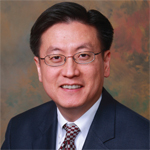Medical School Training Gaps
Dr. Blanco stressed that a paucity of rheumatology education at the medical school level has a negative effect on early SLE diagnosis and referral. Medical school training on how to examine, diagnose and treat patients with such diseases as SLE or rheumatoid arthritis is widely considered inadequate.3
“Medical students do not have a course specifically in rheumatology. So our diseases are integrated into other courses, such as nephrologists talking about lupus nephritis. Upon graduation, medical students may know little about rheumatic diseases and less about connective tissue diseases,” she said. “The onus is on us to leverage ACR material and resources to address this with medical school deans. How can you have one lecture on lupus and never hear about it again until you see a patient in your practice? We have to improve rheumatology education and amplify our rheumatology workforce.”
According to the ACR/ARHP 2015 Workforce Study of Rheumatology Specialists in the United States, the need for healthcare providers to diagnose and manage patients with rheumatic disease will rise sharply over the next 15 years: By 2030, the report estimates 67 million U.S. adults will have doctor-diagnosed arthritis, compared with 52.5 million U.S. adults in 2012. Not all those patients can be managed by rheumatologists, according to the study, which estimates an excess demand of 138% over the projected supply of rheumatologists in 2030.4
Impact of Delayed Diagnosis
Delayed diagnosis can lead to severe outcomes for lupus patients, as Amanda M. Sammut, MD, learned after she became the first full-time rheumatologist on staff at Manhattan’s Harlem Hospital in 2012.
“Harlem Hospital is a public city hospital. We take care of patients who are uninsured, patients who come from different countries and those on Medicaid. The majority of our patients are African-American, African and Hispanic,” said Dr. Sammut, now chief of rheumatology at New York City Health and Hospitals in Harlem and assistant professor of medicine, Columbia University College of Physicians and Surgeons. “I found the people working there didn’t have much rheumatology experience.”
Early in her first year at the hospital, Dr. Sammut treated a 46-year-old, African-American man who had been admitted with severe kidney failure, a creatinine level of 13 and high potassium.
“He needed dialysis right away. His workup included a kidney biopsy that showed he had Class VI lupus nephritis, [in which] lupus has already attacked the kidneys, and they are scarred. There is not much we can do at that point to treat it,” she said. “I found out that in the preceding year, he had had two emergency room visits in other hospitals. In one visit, he had fatigue and a rash on his arms. At that point, he went home with a corticosteroid cream and was told to see a primary care doctor for follow-up. Then, several months later, he presented to another hospital’s emergency room with a rash. This time, they did bloodwork. His kidney function was found to be abnormal, and he had a creatinine of 3. Again, he was sent home with a steroid cream. He was told that he needed to see someone, because his kidney function was abnormal. But he didn’t follow up, because he was scared of losing his job.” The man also had a son with lupus, but these signs were not put together, she said.
She was saddened by her patient’s case. “He is a young man, 46, and he’s scared, and his kidneys are scarred. If this [were] caught earlier, he could have been treated,” said Dr. Sammut. “At this point, I wanted to find out what people know about lupus, and to get involved in educating healthcare providers, and also community members, about lupus.”
She started giving lectures to medical students, primary-care physicians, obstetrician-gynecologists, nurse practitioners and nurses at Harlem Hospital about SLE, and coordinated her efforts with the Lupus Initiative and COIN, which provided slide presentations to accompany clinical talks.
“I didn’t want us to be a hospital that misses those lupus patients early on. Unfortunately, in my first 18 months, I didn’t see that just once. I saw multiple cases where a lupus diagnosis took a really long time, and patients didn’t have the follow-up,” she said. “The people at Harlem Hospital admitted to me that because they had trained without a rheumatologist, they didn’t have much experience in rheumatology in general. They were also asking me to give them lectures on other rheumatology topics.”
Dr. Sammut began speaking about SLE to anyone who would listen, including setting up tables at the Harlem Health Fair and giving talks at local churches using brochures from the SLE Lupus Foundation (now the Lupus Research Alliance).
“People would pick up information on lupus and say, ‘I know someone who has lupus.’ They often shared very sad stories. They would say they knew someone who had had lupus and died. They were young. It was very depressing for me. I heard other stories of people in the community who didn’t want to go to the doctor because they were scared, so they stayed at home. I’d give them information and even tell them how to make appointments,” said Dr. Sammut.
“I found that it was easy to give talks, because the people in the audiences didn’t know much about lupus. I thought, ‘Why can’t fellows do this? If I just graduated and feel confident about it, why can’t they? The materials are already there.’” She recruited rheumatology fellows from programs in New York City to give talks, and together, they held 31 lupus seminars educating 664 healthcare providers.
Giving lupus-related talks is both fulfilling and confidence boosting, said Dr. Sammut.
“You don’t have to be a top researcher or prominent rheumatologist to do this work. I felt I was able to make a big difference,” she said.
Through her ACR volunteer work, “I met a network of senior rheumatologists. It opened the door for me to other opportunities to work on other ACR projects, including writing questions for CARE [an ACR CME course] modules, writing a textbook chapter on rheumatology and writing an educational module on lupus. These volunteer projects improve patient care, as well. I don’t see patients with lupus being missed anymore at my hospital. It’s great for both students and residents.”



